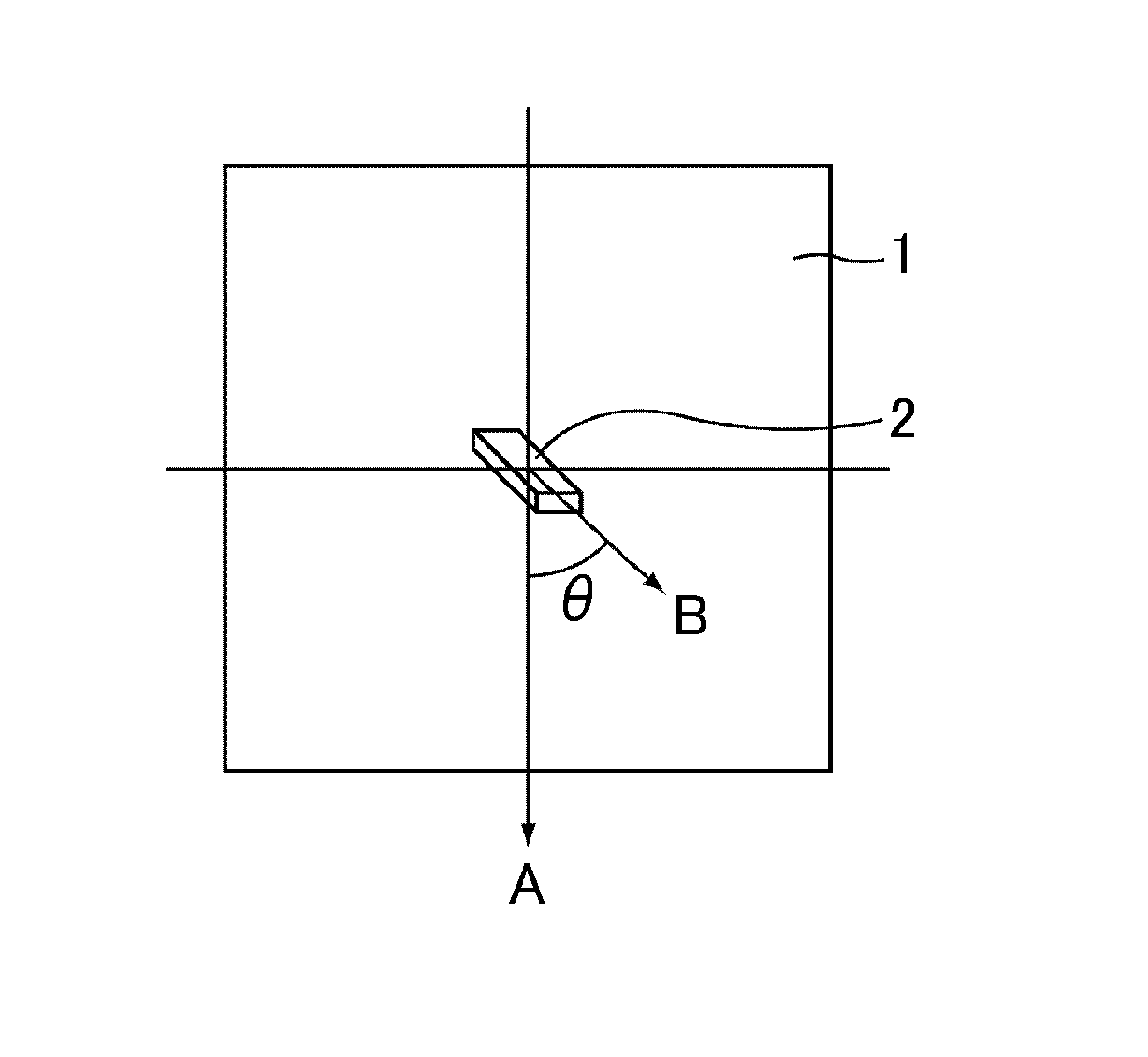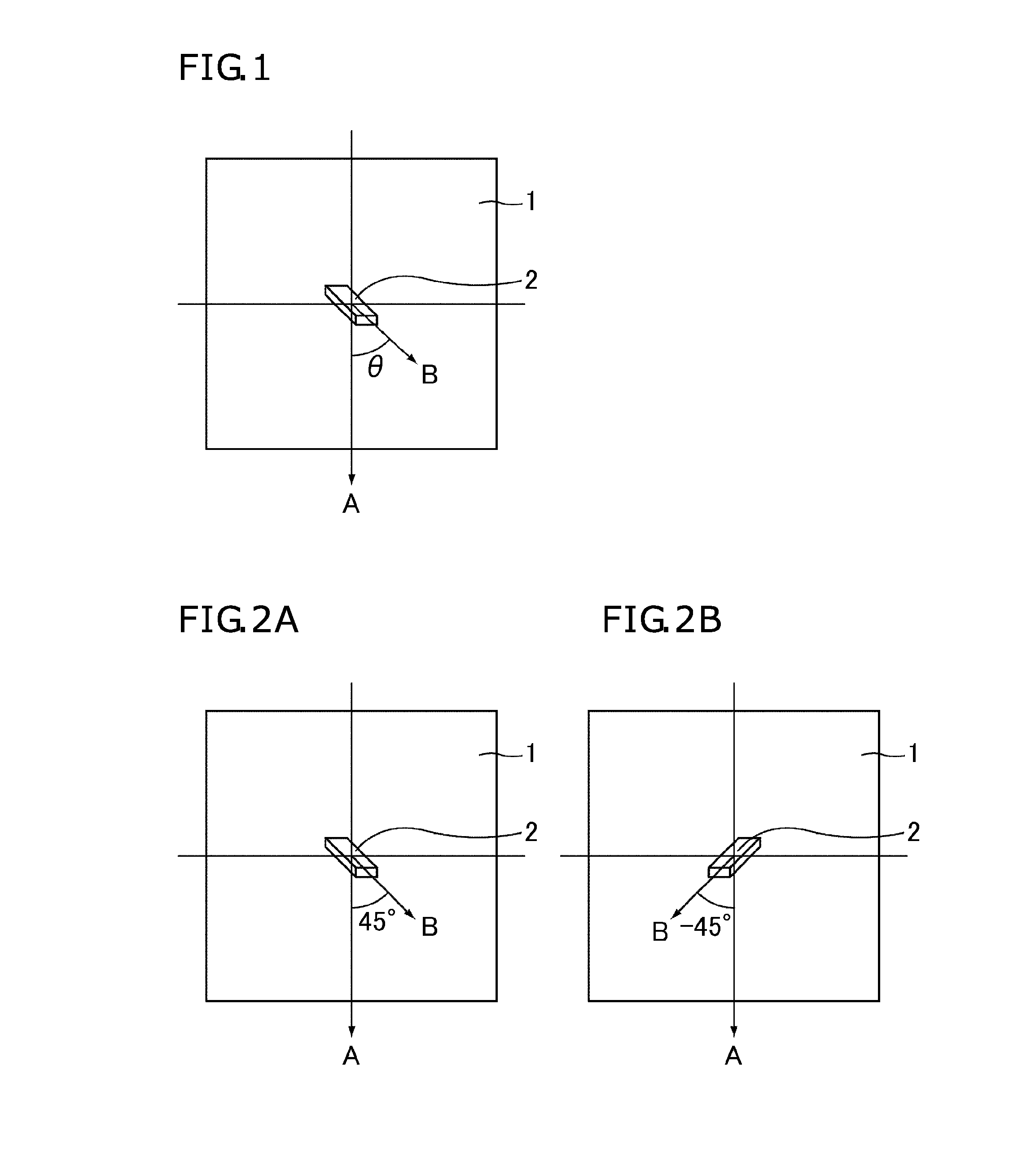Pneumatic tire
a pneumatic tire and rubber technology, applied in special tyres, non-skid devices, transportation and packaging, etc., can solve the problems of reducing the stiffness of rubber, reducing the kinematic performance (e.g. handling stability), etc., to improve the tensile strength, improve the handling stability, and improve the effect of tensile strength
- Summary
- Abstract
- Description
- Claims
- Application Information
AI Technical Summary
Benefits of technology
Problems solved by technology
Method used
Image
Examples
production example 1
Synthesis of Styrene-Butadiene Copolymers (1) to (5)
[0171]After the air in a 3-L autoclave equipped with a stirrer was fully replaced with nitrogen, the autoclave was charged with n-hexane, 1,3-butadiene, styrene, and tetramethylethylenediamine in amounts shown in Table 1, and the temperature in the autoclave was set to 25° C. To the mixture was added a 1.6 M solution of n-butyllithium in hexane, and the resulting mixture was polymerized at an elevated temperature (30° C.) for 60 minutes. After the conversion ratio of monomers was confirmed to be 99%, 1.5 g of 2,6-di-t-butyl-p-cresol was added as an antioxidant. In this way, styrene-butadiene copolymers (1) to (5) were obtained.
Production Example 2
Synthesis of Modified Styrene-Butadiene Copolymers (1) to (5)
[0172]A flask was charged with each of the styrene-butadiene copolymers (1) to (5), n-hexane, and AIBN in amounts shown in Table 2, and the temperature in the flask was set to 60° C. Next, after addition of a modifier to the ...
production example 2
[0194]The materials in amounts shown in Table 3, other than the sulfur and vulcanization accelerators, were mixed and kneaded using a 1.7 L Banbury mixer at 150° C. for three minutes, so that a kneaded mixture was obtained. Thereafter, the sulfur and the vulcanization accelerators were added to the kneaded mixture, and they were kneaded at 80° C. for five minutes by an open roll mill, whereby an unvulcanized rubber composition was obtained. A rubber sheet with a rubber thickness of 1.5 mm was prepared from the unvulcanized rubber composition obtained using the open roll mill. The rubber sheet was cut at predetermined angles relative to the rolling direction to prepare different rubber sheets (unvulcanized rubber layers) with differently oriented staple fibers.
[0195]Next, the obtained rubber sheets (unvulcanized rubber layers) were molded into the shape of a tread and assembled with other tire components to form an unvulcanized tire. The unvulcanized tire was press-vulcanized at 170°...
PUM
| Property | Measurement | Unit |
|---|---|---|
| length | aaaaa | aaaaa |
| width | aaaaa | aaaaa |
| average orientation angle | aaaaa | aaaaa |
Abstract
Description
Claims
Application Information
 Login to View More
Login to View More - R&D
- Intellectual Property
- Life Sciences
- Materials
- Tech Scout
- Unparalleled Data Quality
- Higher Quality Content
- 60% Fewer Hallucinations
Browse by: Latest US Patents, China's latest patents, Technical Efficacy Thesaurus, Application Domain, Technology Topic, Popular Technical Reports.
© 2025 PatSnap. All rights reserved.Legal|Privacy policy|Modern Slavery Act Transparency Statement|Sitemap|About US| Contact US: help@patsnap.com



